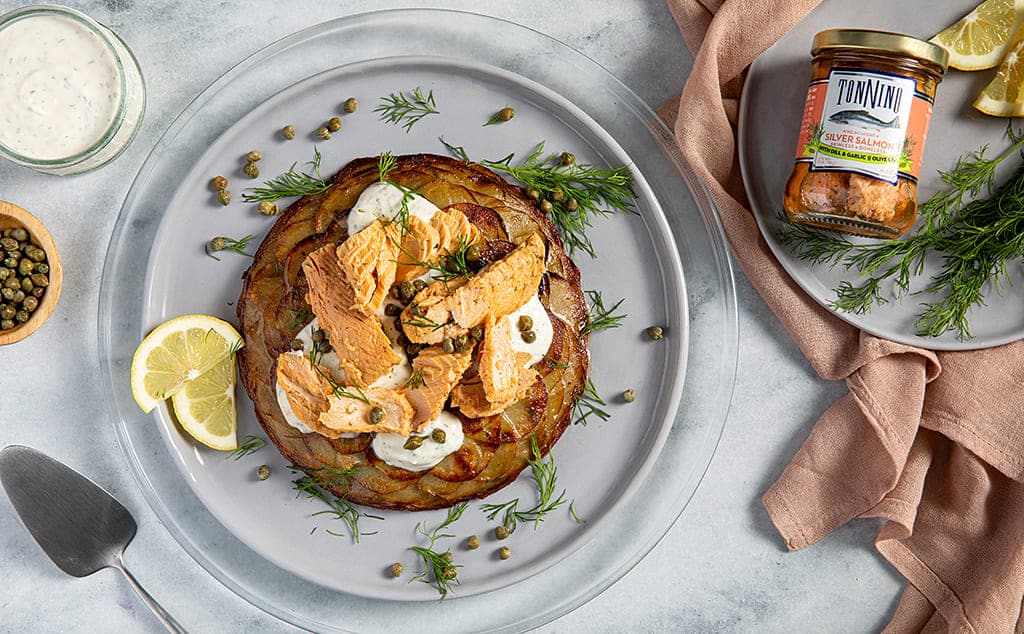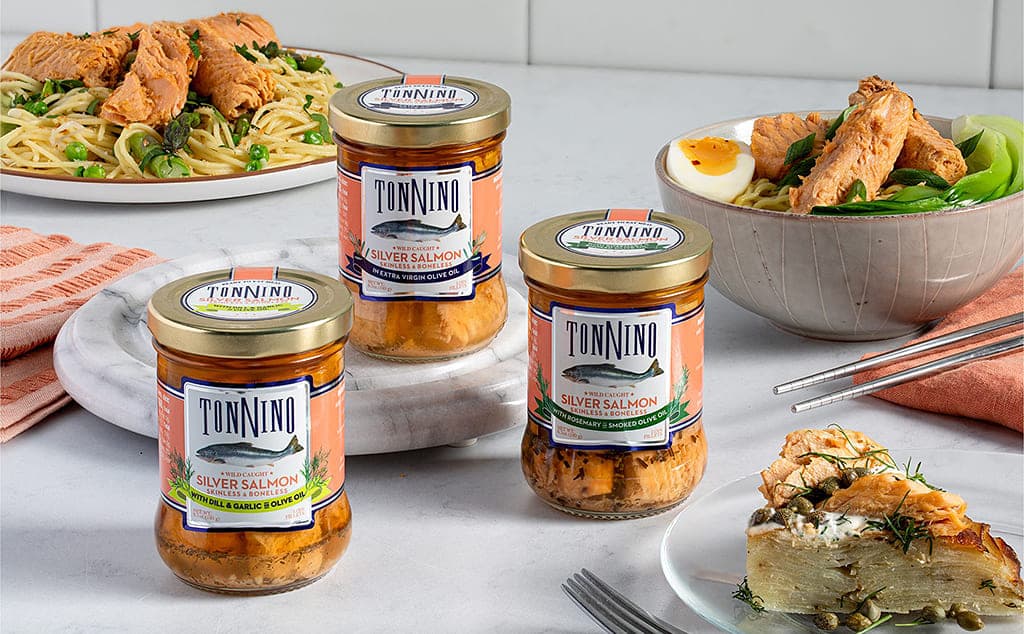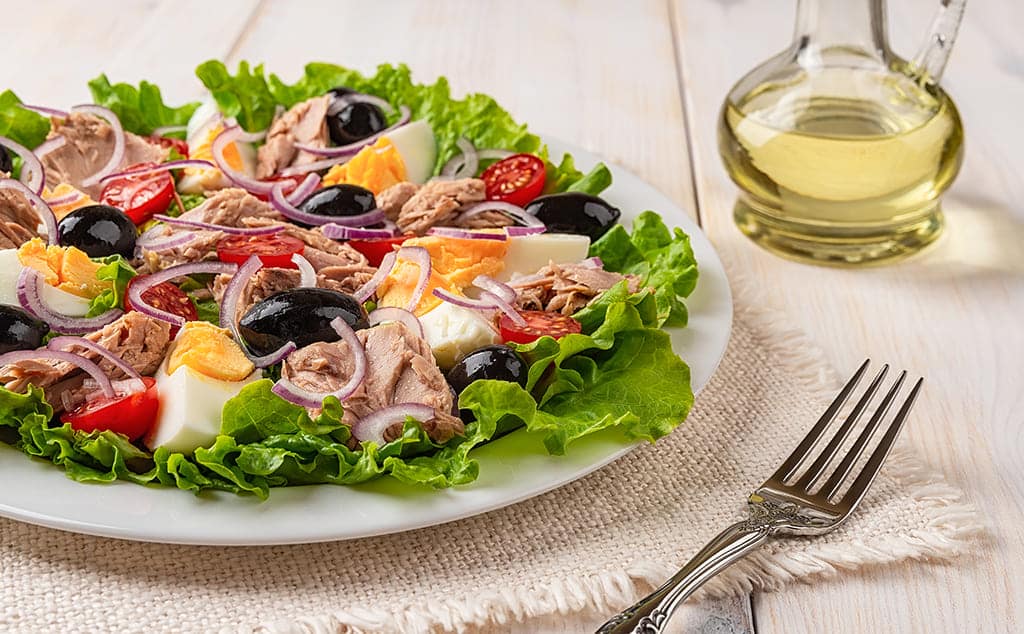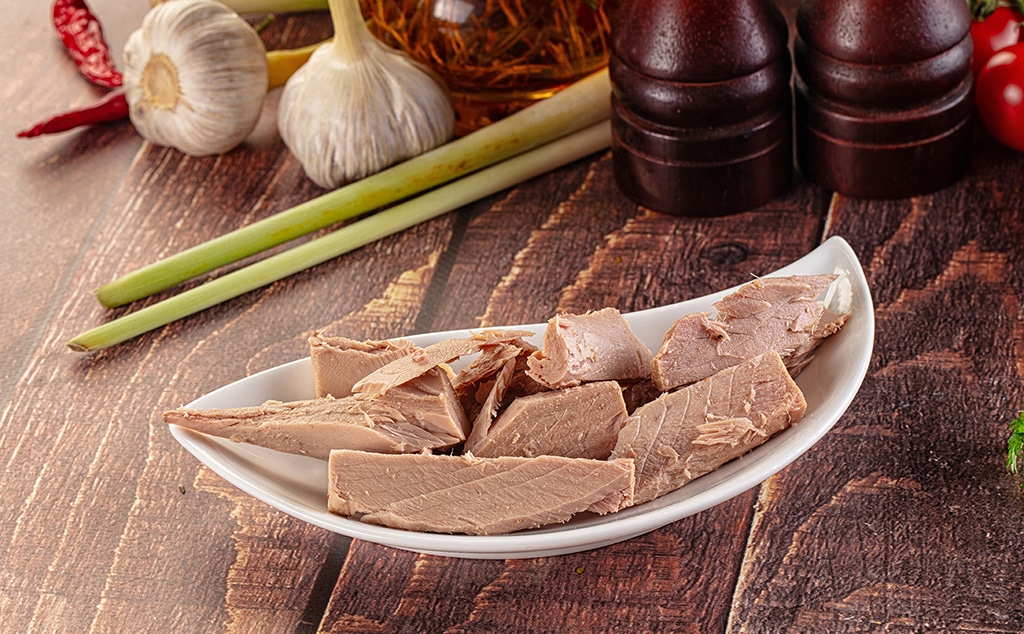The color of salmon is more than just a visual detail. It reveals a great deal about the fish’s life, from the waters it came from to the food it consumed. The hues of salmon, ranging from pale pink to deep red, are directly tied to its origin and diet. For anyone who values quality in seafood, these colors are important indicators that help guide purchasing decisions.
By understanding the different colors of salmon, you can better appreciate the link between authenticity, quality, and taste. At Tonnino, we believe that color reflects integrity. Our premium wild-caught salmon fillets retain their natural shades, preserved in oils and herbs to highlight the authentic character of the fish.
Understanding the Natural Color of Salmon
The natural color of salmon comes from compounds known as carotenoids, particularly astaxanthin. Salmon do not produce these pigments themselves. Instead, they acquire them through their diet of krill, shrimp, and other small marine organisms. As these pigments accumulate in the flesh, they create the characteristic orange, pink, or red tones that consumers recognize.
Color consistency is a mark of authenticity. While the brightness of wild salmon may soften once the fillets are cooked and preserved in oils and herbs, the tones you see are the salmon’s natural color, true to its origin. The important distinction is whether the color comes from diet or from artificial additives.
Tonnino’s silver salmon fillets reflect the authentic color of wild-caught salmon after careful cooking and preservation in gourmet oils. The clear jar allows you to see the integrity of the whole fillets inside, a sign of both transparency and confidence in the quality we deliver.
Why Is Salmon Orange, Pink, or Red? A Nutritional and Environmental Insight
People often ask: Why is salmon orange? Why is salmon pink? Why is salmon red? The answer depends on the type of salmon, its environment, and its feeding habits.
- Orange salmon often feed heavily on krill and plankton, which are rich in astaxanthin.
- Pink salmon typically consume shrimp and other small crustaceans, leading to lighter pigmentation.
- Red salmon, such as sockeye, eat large quantities of astaxanthin-rich organisms, which results in their vivid, ruby flesh.
These variations do not mean one salmon is inherently better than another. They highlight the diversity within the species and demonstrate how ecosystems shape color. Consumers who appreciate these nuances can choose salmon not only for flavor but also for how the fish’s life story is told through its color.
For culinary inspiration that celebrates this variety, visit our collection of salmon recipes.
Does the Color of Salmon Affect Its Taste?
The question of whether the color of salmon affects its taste is common. While color itself does not create flavor, it often signals dietary richness, which does influence flavor.
The natural coloring that remains visible even after cooking often reflects the nutrient-rich diets of wild salmon, which also contribute to a fuller, more complex taste. By contrast, salmon with paler tones may have a lighter, subtler flavor. Both can be enjoyable, depending on your preference and the style of dish you are preparing.
The color of salmon is one of the clearest indicators of quality, and at Tonnino, our products reflect that standard. Each fillet is chosen and preserved with care so that the taste you enjoy reflects both authenticity and premium sourcing.
Color of Salmon and Its Quality: How to Judge What’s in the Package
When selecting salmon, color is one of the easiest and most reliable markers of quality. While no two fillets will look identical, there are patterns to look for.
High-quality salmon should display a natural tone that is even throughout the fillet. It should not appear unnaturally bright or unevenly colored. Variations in shade are natural, but stark inconsistencies may suggest artificial treatments or lower-grade preservation.
We highlight the color of salmon as a reflection of quality, pairing careful sourcing with transparent presentation. Because our salmon is packed in clear jars, you can see the natural cooked color of the fillets for yourself. This visibility is intentional. It reflects our confidence in the authenticity of the product and gives you reassurance that what you see is exactly what you will taste.
The Real Color of Farmed Salmon: The Truth About Artificial Dyes
The real color of farmed salmon is often gray or pale because farm-raised fish do not have access to the same diets as wild salmon. To meet consumer expectations, many producers add artificial pigments to make the fish appear pink or orange. This practice is why people often hear that farm-raised salmon is dyed to look more like wild salmon.
While color additives may make the fish look appealing, they do not replicate the natural authenticity or depth of flavor that comes from a wild diet. This is an important distinction for anyone who values transparency and natural quality in seafood.
Tonnino provides a clear alternative. Our salmon showcases its genuine, natural hues, with whole fillets carefully cooked and preserved in oils that enhance flavor rather than disguise it. You can explore the difference with our premium salmon fillets.
Color of Farmed Salmon vs. Wild Salmon
When comparing the color of farmed salmon with the color of wild salmon, the contrast is significant. Wild salmon develop their natural hues through diet and lifestyle, producing flesh that ranges from pink to red without artificial assistance. Farmed salmon, on the other hand, often requires added pigments to achieve the same look.
This difference in color is more than aesthetic. It reflects the life and authenticity of the fish. Consumers who prefer natural products often seek wild salmon because its color is a direct result of what it ate and where it lived.
At Tonnino, we bring this authenticity to your table by preserving wild salmon that is true to its origins.
Different Colors of Salmon by Species and Region
There are many different colors of salmon, and they vary widely across species and regions. Factors such as diet, environment, and lifestyle influence whether salmon flesh appears pale pink, deep red, or rich orange. These variations are fascinating, and they help explain why salmon offers such a wide range of flavors and textures.
What matters most is that the color is authentic and a reflection of how the fish lived, rather than the result of artificial enhancement. This is why understanding the differences in the color of wild salmon vs. farmed salmon is so important. Wild salmon naturally display unique shades that reflect their diet and habitat, while farmed salmon often lack this diversity without additives.
At Tonnino, our silver salmon fillets showcase the authentic hues of wild salmon, preserved in oils to highlight both taste and quality.
For gourmet meal ideas that celebrate the natural beauty of salmon, explore our curated salmon recipes.
Start Enjoying Premium, Naturally Colored Salmon from Tonnino Today
The color of salmon reflects far more than appearance. It tells the story of the fish’s life, its environment, and its authenticity. For Tonnino, it is also a symbol of quality. Our wild-caught salmon fillets retain their genuine cooked shades, carefully preserved in oils with herbs that enhance flavor without masking the natural qualities of the fish.
When you choose Tonnino, you are choosing salmon that is true to itself. There are no artificial dyes or unnecessary treatments. Instead, you receive whole fillets that reflect their natural origins and are hand-packed with precision.
Find a location near you to explore Tonnino’s premium salmon collection. Bring the authentic beauty of naturally colored salmon into your kitchen and experience gourmet quality with every bite.
Up Next





